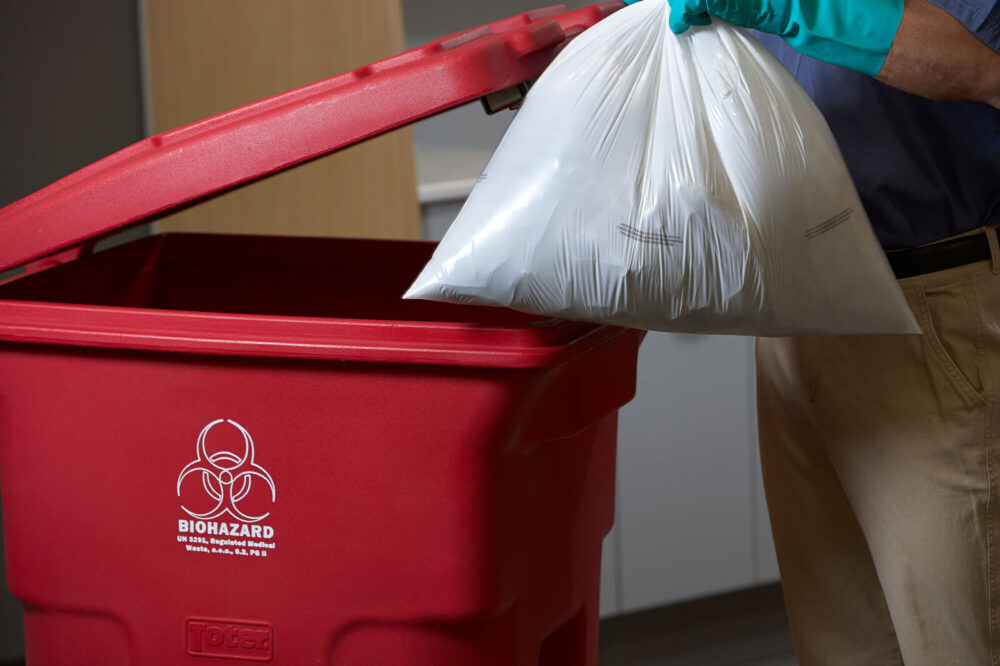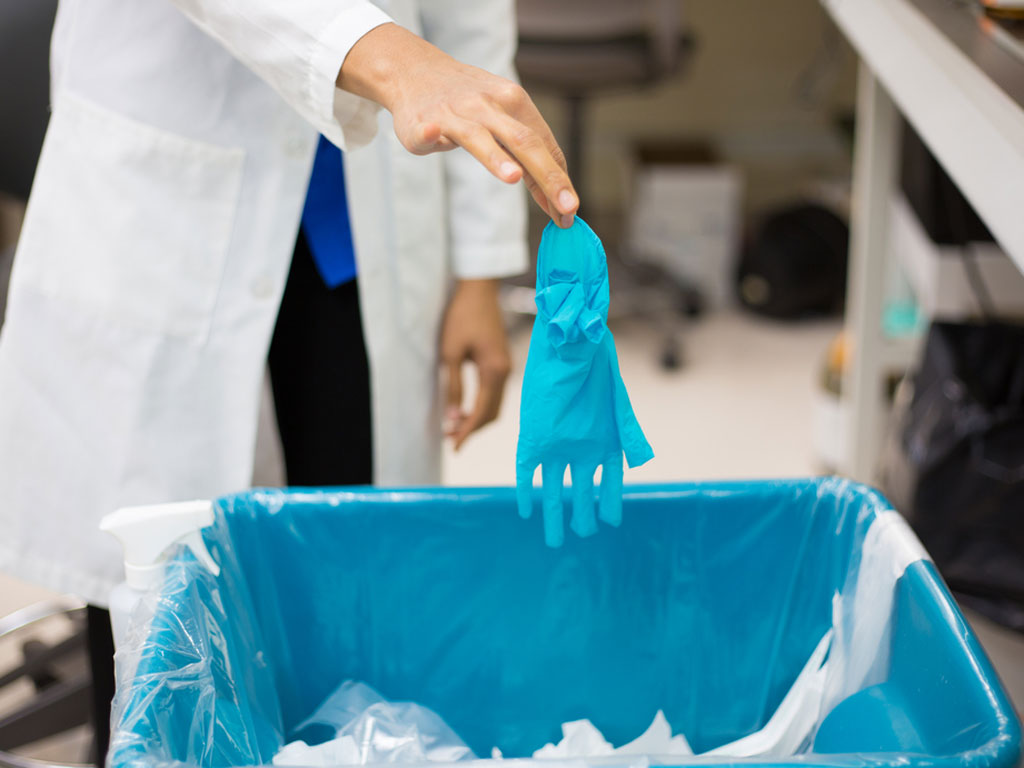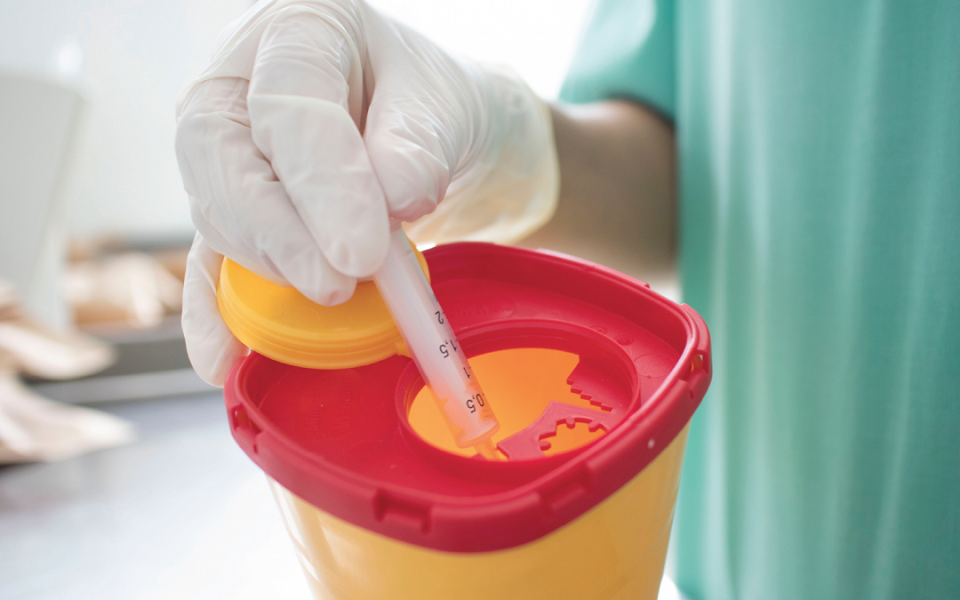With the ever-increasing stream of medical waste, it’s easy to get overwhelmed with all the rules and regulations. But don’t worry – we’re here to help! In this blog, we provide tips and rules so you can manage biohazardous and medical waste like a pro! Ready to jump in? Let’s go!
How to Properly Handle and Store Biohazardous and Medical Waste

Properly handling and storing biohazardous and medical waste is a critical component of any healthcare facility’s medical waste management plan. Biohazardous materials are potentially infectious and must be discarded in accordance with local, state, and federal regulations. It is any non-biohazardous debris that results from medical procedures, experiments, or patient care.
When working with biohazardous and medical waste, it’s important to follow certain rules and guidelines to help ensure safe handling practices and prevent contamination or spread of infection to staff members or patients. The following tips should be considered:
- Always wear personal protective equipment (PPE) when handling or disposing of biohazardous and medical waste material. This includes gloves, masks, gowns, gowns with long sleeves, eye protection such as safety glasses or face shields, shoes that cover the entire foot area (such as steel toe boots), and other items as needed.
- Follow all applicable policies and procedures when disposing of biohazardous materials. This includes proper storage (in a dry place away from direct sunlight) as well as labeling containers clearly with the hazardous material symbol in order to identify them easily if needed.
- Reusable containers used for collecting biohazardous material must be airtight to prevent leakage or aerosolization of contaminants into the environment. Be sure these containers are properly certified for use with infectious materials before use.
- The transport process must be done in a way that ensures safe disposal at the appropriate facility; this means ensuring it is transported in appropriate vehicles without risking exposure to others while en route.
- Once disposal has taken place there must be strict records kept of the type of materials disposed of and tracking numbers associated with their movement should also be recorded so they can easily be tracked if needed in the future for reference purposes.
Best Practices for Disposing of Biohazardous and Medical Waste

They can be extremely dangerous, as these types of materials may contain infectious agents and contaminants. For this reason it is essential to properly manage and dispose of this type of waste. Here are some guidelines you should follow:
- Use designated receptacles: Dedicated biohazardous waste containers should be used. All containers should be color-coded, labeled, sealed properly, and only filled with designated types of hazardous materials.
- Separation: Different materials must be kept separate and should not be mixed in the same container. This helps to make sure no harmful substances will cross-contaminate each other when stored or transported to a disposal site.
- Training: Make sure all personnel who are handling biohazardous or medical waste are properly trained in proper handling techniques and safety procedures. Additionally, workers must wear appropriate personal protective equipment (PPE).
- Minimize Waste: Anything that can be reused or recycled should be handled in that way before it is disposed of as hazardous material.
- Proper Disposal: Dispose of your medical or potential hazardous waste according to applicable federal, state and local recycling laws and regulations. Depending on the type of material you may need to utilize a FDA approved vendor for the final disposal process for certain items such as prescription drugs or syringes must have special handling requirements met prior to duly approved by a permitting agency prior to disposal obtain permits from their local municipality for pick up prior final disposal.
Following these steps helps ensure that biohazardous and medical waste is managed safely from start to finish in order to avoid any harm coming from contact with these materials.
Tips for Training Employees on Biohazardous and Medical Waste Management

Employee training is a key component of any successful medical and biohazardous waste management program. It is essential for employees to understand the importance of proper waste management and of maintaining good safety practices in handling different types of hazardous materials. In order to ensure that all personnel have an adequate understanding of proper waste disposal methods, employers should make sure to provide adequate training opportunities for their employees.
When providing employee training on biohazardous and medical waste management, it is critical that all staff have an understanding of the legislation surrounding the management of this type of material as well as best practice guidance for handling it safely. Good communication is also essential – employers should explain why these materials are hazardous and provide information on how they can be safely handled, stored, transported and disposed of. It is also important to explain the consequences should improper methods be employed in dealing with or disposing medical or biohazardous material. Additionally, employers should provide examples and case studies in order to engage with staff throughout the process and ensure they fully understand the regulations and safety processes necessary when managing these wastes.
To protect their employees as much as possible when dealing with hazardous material, employers however need to also equip staff with important personal protective equipment (PPE). This equipment includes items like face masks, gloves & goggles – which are necessary when handling or segregating certain types of medicines and human body fluids from other waste streams. Providing adequate PPE will protect employees from coming into contact with dangerous chemicals or other potentially harmful substances during the course of their duties.
Conclusion
In conclusion, proper management and disposal of biohazardous and medical waste is critical to ensure public safety. Following the tips and rules outlined in this guide will help you to maintain safe working conditions and prevent the spread of infection.
In addition to following these procedures, it is important to practice good handwashing techniques in order to reduce the spread of germs. By adhering to these protocols and staying current with best practices, you can rest assured that your facility is providing a safe environment for staff, patients, visitors, and the public.



